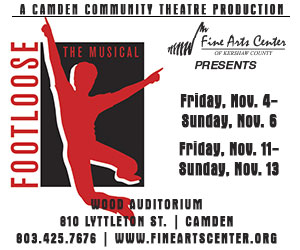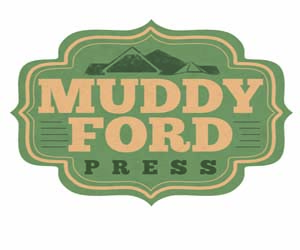Susan Lenz Aims to Leave the Art World in Stitches. Really.
by Susan Levi Wallach
At 5 o’clock on an evening in December, Susan Lenz is in Mouse House going through framing options with a customer. Their conversation moves quickly through a range of topics, then segues into a discussion of a work on display, which the woman admires. Like many of the pieces for sale in the Park Street frame store and gallery, the piece – an elaborate multicolored textile that manages to resemble stained glass, a disintegrating quilt, and an intricately tatted bit of lace all at the same time – is an original Lenz. And there you have the sometimes dueling strands of Lenz’s life: textile and mixed-media artist but also business owner and framer. Despite her increasing renown, even Lenz has a day job.
With the new year weeks away, Lenz already is planning for about a dozen 2012 exhibits and residencies. Her inventory fills several rooms in the apartment she and her husband, Steve Dingman, share above Mouse House’s main floor (their elder son, a soloist with the Birmingham Royal Ballet, lives in the UK, their younger son lives in Columbia). The two-dimensional pieces hang on the walls; three-dimensional works dangle from the ceilings and stands on the floors. On this day, sixty-some-odd Last Words art quilts lie stacked in crates ready to ship to the Imperial Center in Rocky Mount, where they will hang till May 13 in a solo show. Her Doors and Keys balance on the floor of one room. Other works lean in bins, line shelves. Fragments, found objects, and stitched spools wrapped in wool fill what Lenz calls her “processing room,” waiting to be completed or incorporated into works yet to come. You’d think you were examining the lifetime work of a mid-career artist. But though Lenz is 53, she’s just beginning. Life, she’ll say, began on Bastille Day in 2001. “By that point I was thinking maybe I could be an artist with stitching. And it was never going to happen unless I made it happen. I downsized a still-growing business, and I got a studio at Gallery 80808 and I went to work.”
Not bad for someone who set out to be a museum curator, then spent years dithering about whether textiles and fiber and thread were a calling or an indulgence.
You never know what is going to change your life. For Lenz it was a one-woman embroidery exhibit at a senior citizens’ complex in Columbus, Ohio, where her husband was completing his PhD in Civil Engineering (both are diploma-carrying Buckeyes). She had already started stitching – repeatedly checking out the Reader’s Digest Complete Guide to Needlework from her local library and making kits and patterns, her serious efforts limited to a single week each year at an out-of-town stitching seminar. Like any good grad-school wife, she had a paying job. Being Lenz, it wasn’t your typical grad-school wife gig: for four and a half years, she delivered singing and dancing telegrams — $75 to a g-string, $110 to bare. Pretty good for fifteen minutes in the 1980s. “I didn’t need to be the poor graduate student,” she says. “It was a good job. It also was one you knew very quickly was going to have a short life expectancy. By twenty-six, you’re already an older woman. the most popular occasion: the fortieth birthday party, bought by the wife. The day Steve turned forty it was shocking. I had imagined that by the time we were forty we would have a house, perfect kids, everything was going to be solved ,and we wouldn’t have to worry about what bill was coming in the mail – we would we able to afford it times three. Life throws curves balls at us all.”
The curve ball arrived in 2001, when Lenz realized that she had her priorities reversed. “By that point I was struggling – wanting to stitch all the time and not wanting to wait for my one week a year,” she says. “And it was never going to happen.” Then it did: having fired her head mat cutter at the Mouse House, Lenz had a decision to make: hire another one and let life continue status quo, or downsize her still-growing business and get to work. As Lenz puts it, “I celebrate Bastille Day.”
If there is a god of things serendipitous, Lenz clearly has dibs on his mojo.
A little more than a year later, she had the studio at Gallery 80808. She also had a different name: at her husband’s suggestion, she signed her family name on her work. It was a matter of establishing a new identity to mark her life’s new direction. But Lenz is as mindful of the feminist aspect, as she is that as a female artist whose medium is textiles, discrimination can be a double whammy. “It still makes me mad that women are often considered second-class artists,” she says, “especially those working in fibers.”
If people who put gender ahead of artistic merit be damned then, in Lenz’s book, those who say that textiles and stitching are less fine art than they are craft or, worse yet, “women’s work,” be damned twice. “I stitch because I love the feel of fabric,” she says. “I stitch because it is how I express my ideas and concerns. I stitch because it is art and I am an artist. I love text and fabric because they speak to people. They are my means for communication. My work carries a message, and the finished work is more important than the chosen medium. I did not choose fiber and stitching in order to express my female point of view.”
Nor, she might add, does the medium determine who is a fine artist and who is not. “It’s an ongoing problem for an artist working in any craft-like medium, not just fiber,” Lenz says, pointing out that many artists who work in clay call themselves ceramicists or clay artists as a defense against the perception of pottery as something that is functional, like a coffee mug or a vase. Not art but craft – which, depending on the intention of the creator, it still might be. “Where’s the line between craft and art? And since when did craft become a dirty word?”
In Columbia, Lenz has had exhibits at Tapps Art Center, S&S Art Supplies, and Anastasia & FRIENDS, all within the past six months. Her work also has been in juried shows throughout the country, recently at the Fredericksburg Center for the Creative Arts and the Workhorse Arts Center, both in Virginia, and the Mesa Arts Center’s 33rd annual contemporary crafts exhibition in Arizona. “We’re talking ceramics, textiles, metalwork, glass – traditional craft media. But we’re not talking craft-y anything.”
Lenz has little patience with people who look at textiles and think, “Oh, DIY.” She insists that what is sometimes dismissed as “only craft” can be as significant as any work coming out of the MFA programs that spawn artists like salmon spawn smolt. “People who write about art and art history – academics and people who have a vested interest in one or the other – proliferate these definitions and try to tell other people what is real art and what is craft, what is acceptable and what is not. When you go into your studio and you’re engaged in the process of creation, you’re not thinking is this art or is this craft? You’re thinking about the next thing to do to get the result you’re after. And it’s the same whether you’re brushing on paint or stitching with thread.”
Nearly all Lenz’s art incorporates thread, though not all has stitching. Her Decisions installation includes thread-wrapped rusted nails in a vintage ice-cream scoop. Her Keys for the City, which filled a window at Tapps last year, consisted of hanging keys, as does her Wall of Keys, a separate installation at Gallery 80808. The concept for these installations in turn grew out of the work that came before it: a mixed-media piece called Personal Grounds that began with doors covered in keys. “I was frustrated as a mother,” she explains. “Where are the answers to all these questions. Where is the key to happiness? Where is the key to knowledge? How do you know what’s behind door number one or door number two or door number three? I was going to be a museum curator. He was going to be an electrical engineer. There’s so much about life that is mystery. It’s one of the things that I think craft artists communicate through their work, where a lot of fine artists don’t necessarily. I think that’s because of the academic training. Fine artists are stating something. Craft artists often pose questions.”
In both installations, some of the keys are framed, some aren’t; some are tagged and accessible, some aren’t tagged and aren’t accessible. The accessible tags each have a word on them: freedom, happiness, success, money, failure – “failure is really big and right out there in the open,” Lenz says. “You can get to it really easily.”
In Lenz’s world, one piece leads to another piece, one body of work to another or several. Such was the case three years ago, when Lenz surveyed the doors and keys of Personal Grounds in her studio. “The more I looked at the work, the more I realized that what it was missing were the people. There was this pristine gallery and the work, and it’s so about decisions and options and which key you’re going to take. But there were no figures. That’s how I started my Decision Portraits series. I started with my sister, Wanda. Her decision is called Five Years Sober and the stitching on it is ‘One day at a time.’
Then she got to exhibit all 107 of the portraits in Charleston at City Gallery at Waterfront Park – and came to a realization: “The portraits were bigger than the doors. The keys had gotten very small. So I went back into the keys and I decided I needed a whole wall of these keys, which has been exhibited without the portraits. It was the earlier work that inspired the portraits and the portraits that inspired the wall. It circles back to itself. One of the problems with a lot of these historians and academics is that they want to have a natural progression. Yeah, you could look at art this way, but things backtrack and overlap. It’s not always a linear progression.”
The Last Words art quilts on exhibit in Rocky Mount are a series of gravestone rubbings that Lenz got permission to take in the Circular Churchyard, one of Charleston’s oldest cemeteries, using silk and Crayola Jumbos, then layered and stitched into. She describes them as dealing with memory, personal legacy, and mortality. “I look at it as what do you want to do with what time you’ve got left and how do you want to be remembered. How you are going to be remembered is how you lived. To me it’s about life. Other people can look at it as death. They are grave rubbings. It’s not like death isn’t there.” The silk, she added, is not very abrasive to the stone.
Like Personal Grounds and Decision Portraits, Last Words makes use of text as well as textile. And why not? “We often use words from textiles to suggest writing,” Lenz points out. “A line of communication is a thread. We spin a tale. Text is very important in a lot of my work.”
The stitched spools in the processing room have no text on them, but Lenz describes them as part of a narrative nonetheless. She has them piled in an old cradle – Lenz scours auctions and thrift stores – which with a giant canopy will be part of another installation. The canopy, which Lenz expects to fill the Gallery 80808 atrium, is stitched-together vintage crochet and needlework. “I’m working on a whole bunch of things that are three-dimensional, dealing with the concept of time,” Lenz says. “The canopy bed is suggestive of those little girls we all once were. We all dreamed about canopy beds. We all dreamed about happily ever after.”






.jpg)
